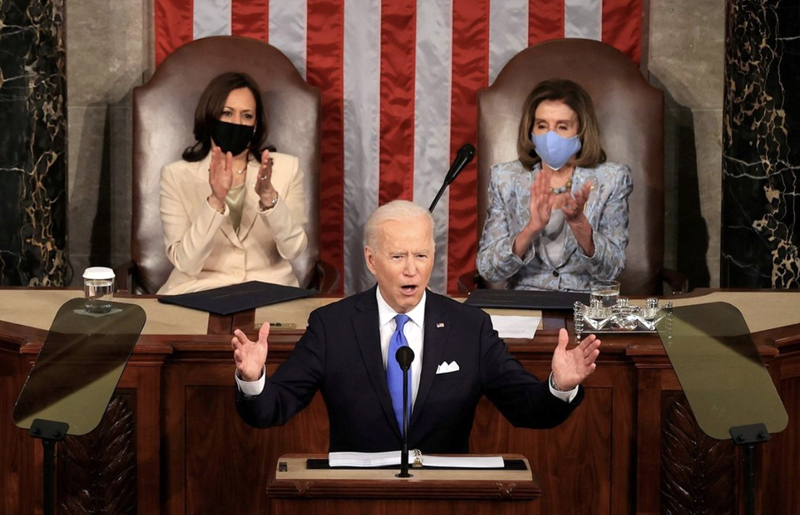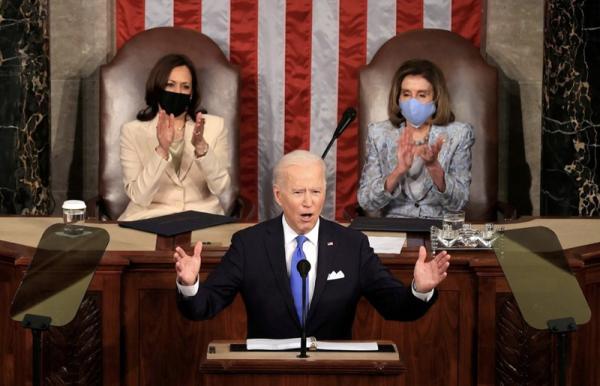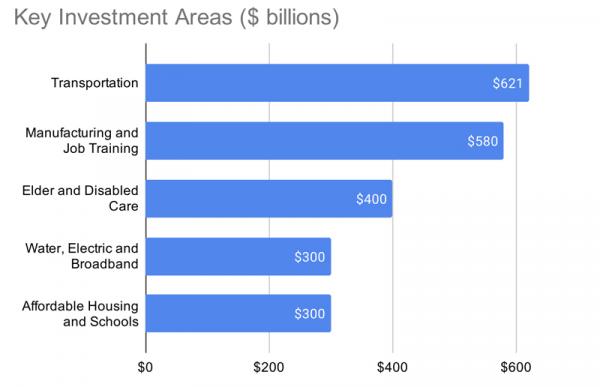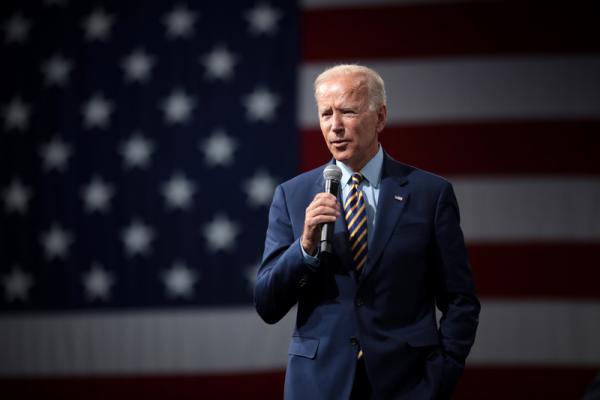KID REPORTERS’ NOTEBOOK
Biden Proposes Spending on Infrastructure and Jobs


Vice President Kamala Harris and House Speaker Nancy Pelosi applaud as Biden addresses Congress.
“This is the largest jobs plan since World War II,” President Biden said in his address to the United States Congress on April 28.
Biden was referring to a sweeping plan which his Administration sees as an opportunity to “reimagine and rebuild a new economy” after the pandemic. “The American Jobs Plan is an investment in America,” according to the White House, “that will create millions of good jobs, rebuild our country’s infrastructure, and position the United States to outcompete China.”
In his first 100 days in office, Biden has introduced several ambitious proposals, including a $1.9 trillion COVID-19 relief package, which he signed on March 11 after the legislation passed in Congress. A few weeks later, Biden released a $2 trillion plan to repair and rebuild infrastructure in the U.S. The proposal calls for investments in transportation, buildings, and public utilities (which supply water, electricity, and phone lines). It includes $621 billion for roads and bridges and $165 billion for public transportation.
But the plan takes a broader view of infrastructure to include education, childcare, and eldercare. It would be paid for with higher taxes on corporations and the wealthiest Americans.

Munveer created this chart, which is based on proposed spending in Biden’s new infrastructure plan.
DEFINING INFRASTRUCTURE
The plan has led to disagreement on what qualifies as infrastructure. Republican lawmakers say that infrastructure spending should only cover tangible items such as roads, bridges, and airports.
“The Democrats’ infrastructure proposal goes way beyond what working Americans would call infrastructure,” said Senate Minority Leader Mitch McConnell of Kentucky of New York. “It tries to use a bipartisan issue as a Trojan horse [deceptive cover] for tax hikes and miscellaneous liberal policies.”
Opponents of the plan object to items such as $400 billion to help care for the elderly and disabled. “The price is too high for the bill,” said Matt F., 12 of San Mateo, California.
Republican lawmakers have proposed a more modest $568 billion plan.

President Biden is proposing “the largest jobs plan since World War II.”
INVESTING IN CHILDCARE AND EDUCATION
Biden and other Democratic leaders argue that including initiatives such as broadband and electric car chargers reflect technological advances and changes to the economy over the past century.
“Addressing infrastructure, climate, and environmental justice together to create millions of good-paying jobs is the right combination to meet America’s challenges,” said Senate Majority Leader Chuck Schumer.
The broader definition of infrastructure, referred to as "human infrastructure," includes childcare, investing in community colleges, and other social programs that will help women stay in the workforce while raising children.
“We can’t make progress,” said Graham K., 11, of Los Altos, “without investing in areas like mass transportation, broadband, and education.”
